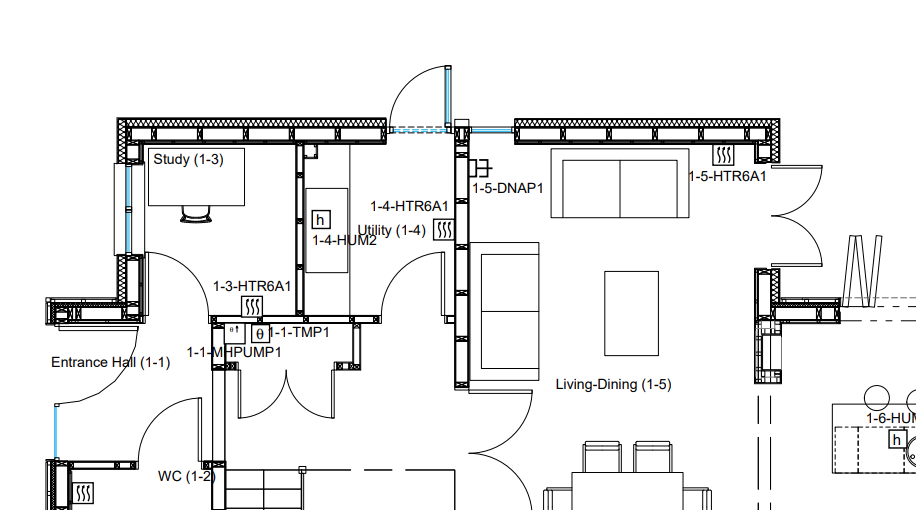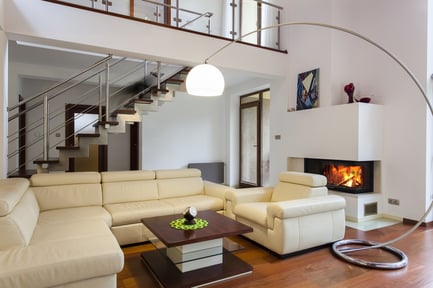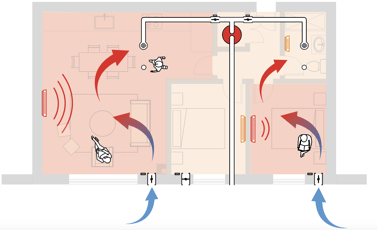
The client
McCarthy Stone is the UK’s leading developer and manager of retirement communities.

A developer is planning to build 200 homes in 100 identical semi-detached units.
Most of the construction will take place offsite, which minimises the time, expense and local environmental impact inherent to operating a construction site.
The developer intends to design the buildings so that all their services are electrical. Electrical heating has several advantages over gas heating:
However, electricity is around three times as expensive as gas per unit of heat energy, and the all-electric approach is only viable at all because the homes will be built using high-quality fabric that retains heat very efficiently. The developer still needs to find ways to maximise heating efficiency.
Using high-quality materials gives each building an envelope that allows very little air leakage, enabling airflow through the homes to be controlled by mechanical extract ventilation (MEV). That control enables the incorporation of an exhaust-air heat pump (EAHP) to maximise efficiency.
As shown below, outside air enters through damper-controlled vents in bedrooms and living rooms where electric heaters warm it to the comfort temperature. It then passes to bathrooms and kitchens where it is drawn into ducts that pass through the EAHP, which extracts the heat energy into the hot-water tank, and out through the exhaust vent.
 |
The whole system can be operated by atBOS, using a network of sensors and meters to continually monitor the indoor environment and energy flows within a home. Integrating the ventilation with the space and water heating avoids using energy unnecessarily and maximises the value of energy that is used:
The atBOS uses a network of sensors and meters to collect data, actuators to control devices, and a central hub in every home. Designing atBOS into the homes from the outset keeps capital costs lower than a retrofit because most of the components can be installed in the offsite stage of construction.
While most developers see atBOS primarily as a system for automating heating, ventilation and air-conditioning (HVAC) services, it can also cover several other core functions and once the decision is taken to install the atBOS infrastructure, it is usually the cheapest and simplest way of doing so.
For a multi-unit development, possible functions include:
| Project description | Multi-unit new build residential development |
| Atamate controlled systems |
|
| Atamate data products |
|
| Mechanical systems |
|

McCarthy Stone is the UK’s leading developer and manager of retirement communities.

A developer building new homes for social housing and for private sale.